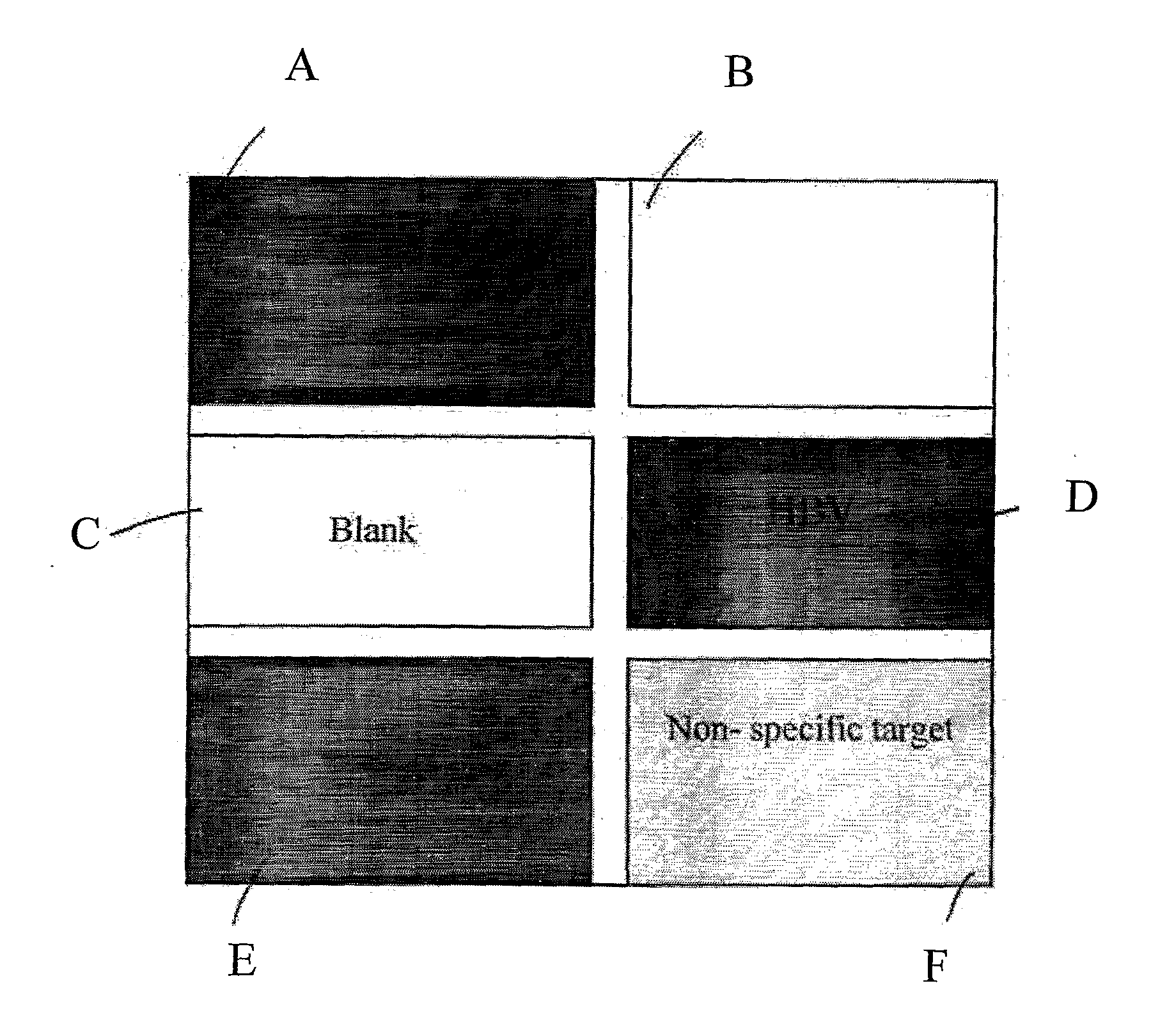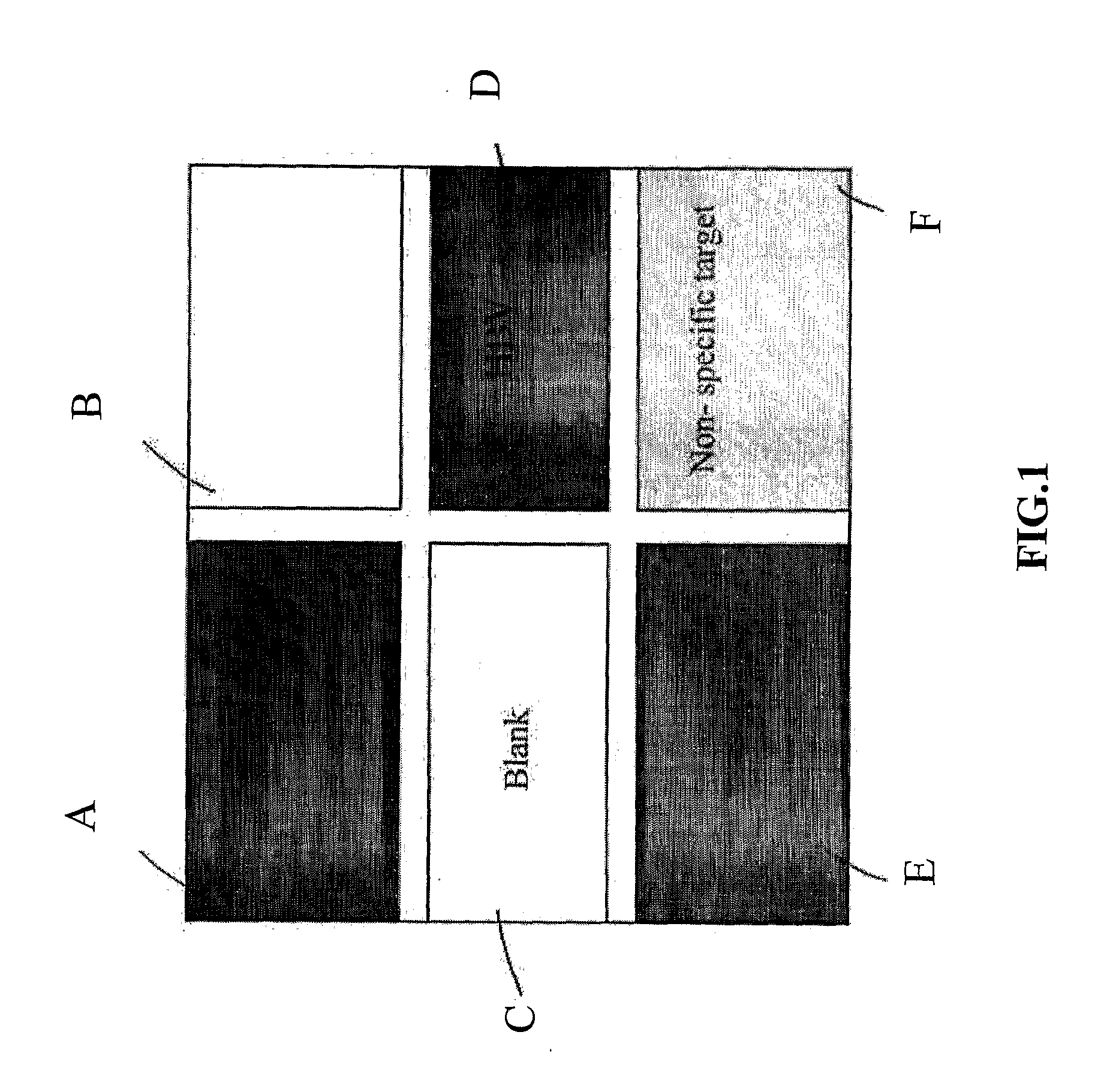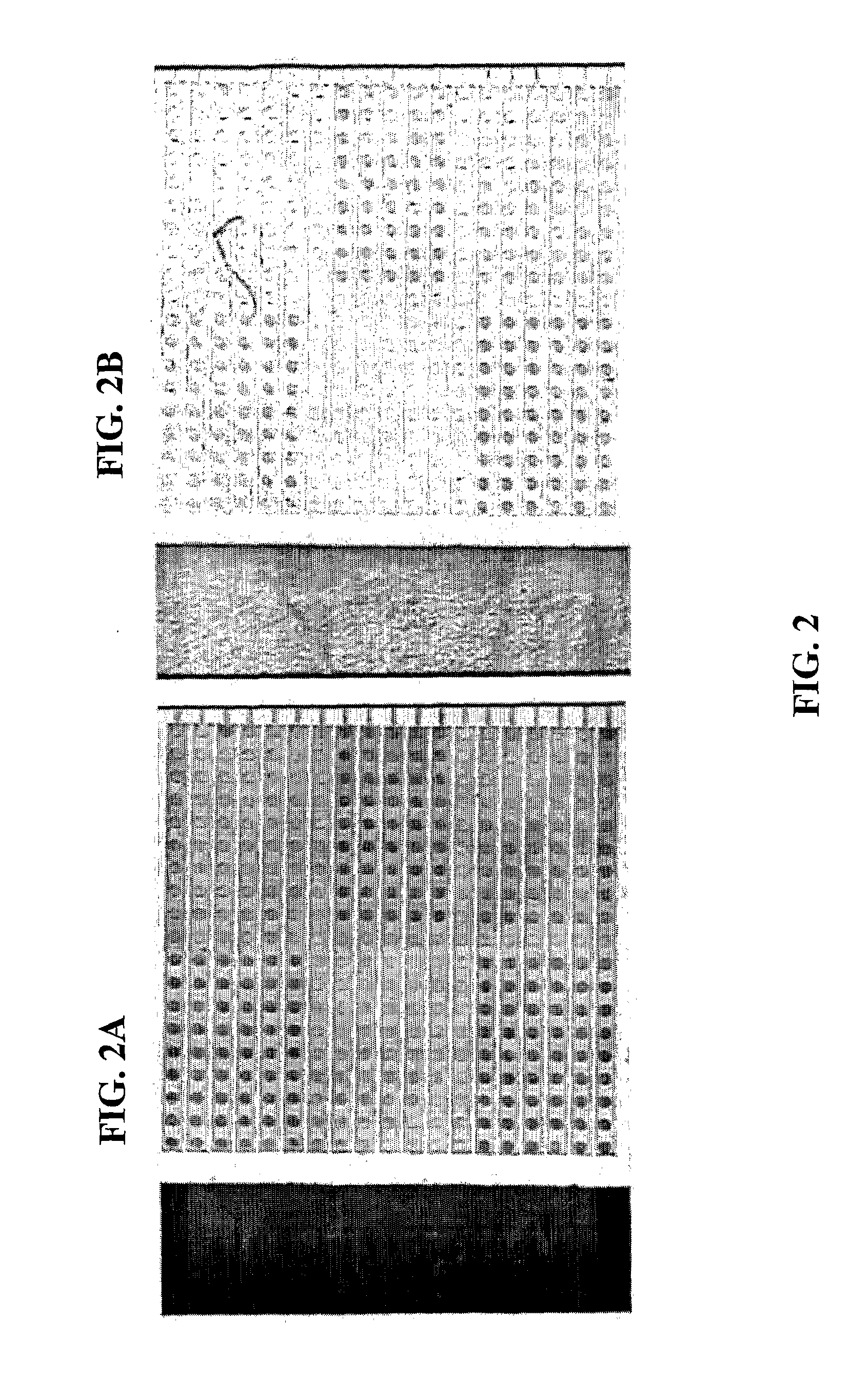Method for detection of analyte in microarray of samples and apparatus for performing such method
a microarray and analyte technology, applied in the direction of instruments, material electrochemical variables, magnetic variables, etc., can solve the problem of often unsatisfactory detection of biological analyte by optical means, and achieve the effect of convenient comparison
- Summary
- Abstract
- Description
- Claims
- Application Information
AI Technical Summary
Benefits of technology
Problems solved by technology
Method used
Image
Examples
experiment 1
[0032]In this experiment, the target analyte was the Hepatitis B virus and the signal enhancement agent was nano-sized gold particle. Hepatitis B virus (HBV) probes tagged with nano-sized gold particle were used as positive control. Specifically, referring to FIG. 1, there is shown a schematic diagram of a microarray of samples on a chip wafer. The chip wafer was spotted according to the pattern as shown in FIG. 1. In particular, the chip wafer was divided into six sections, namely sections A to F. Sections A, D, and E are the dark areas and these areas represent the area of positive control with the Hepatitis B virus probes which have been tagged with the signal enhancement agent. The light grey area, i.e. Section F, was loaded with non-specific targets which served as negative control. The white areas, i.e. Sections B and C, did not contain any spotted sample and they served as negative control. With this configuration, positive result, or darker color, should be observed in regio...
experiment 2
[0038]FIGS. 6a to 11 show data and result of an experiment similar to that shown in FIGS. 1 to 5b and as described above. Specifically, a chip wafer was used and it was similarly divided into six sections, i.e. Sections A to F, with samples including target analyte, positive control and / or negative control loaded therein. Sections A and D were loaded with specific probes. Sections E and F were loaded with specific probes but diluted 100 times and 10 times, respectively. Section C was loaded with non-specific probes and Section B was loaded with only buffer. See FIG. 6f for key. The specific probes were similarly HBV probes. In this experiment, as compared to the experiment as shown FIGS. 1 to 5b, there are however a number of differences. First, reaction was allowed to take place on a chip wafer, and an image of the chip wafer was taken when the reaction had taken place for less than 6 minutes (see FIG. 6a), about 6 minutes (see FIG. 6b), at about 10 minutes (see FIG. 6c), at about ...
PUM
| Property | Measurement | Unit |
|---|---|---|
| wavelength | aaaaa | aaaaa |
| wavelength | aaaaa | aaaaa |
| wavelength | aaaaa | aaaaa |
Abstract
Description
Claims
Application Information
 Login to View More
Login to View More - R&D
- Intellectual Property
- Life Sciences
- Materials
- Tech Scout
- Unparalleled Data Quality
- Higher Quality Content
- 60% Fewer Hallucinations
Browse by: Latest US Patents, China's latest patents, Technical Efficacy Thesaurus, Application Domain, Technology Topic, Popular Technical Reports.
© 2025 PatSnap. All rights reserved.Legal|Privacy policy|Modern Slavery Act Transparency Statement|Sitemap|About US| Contact US: help@patsnap.com



